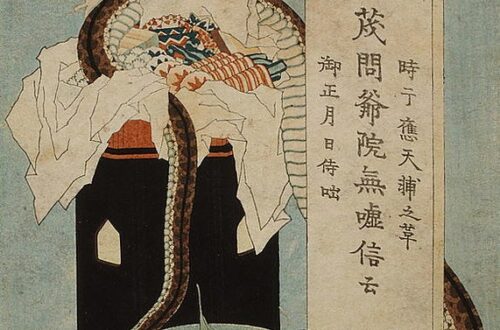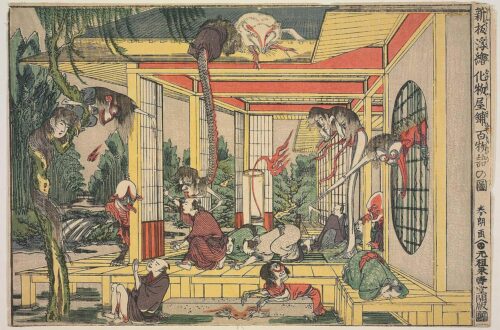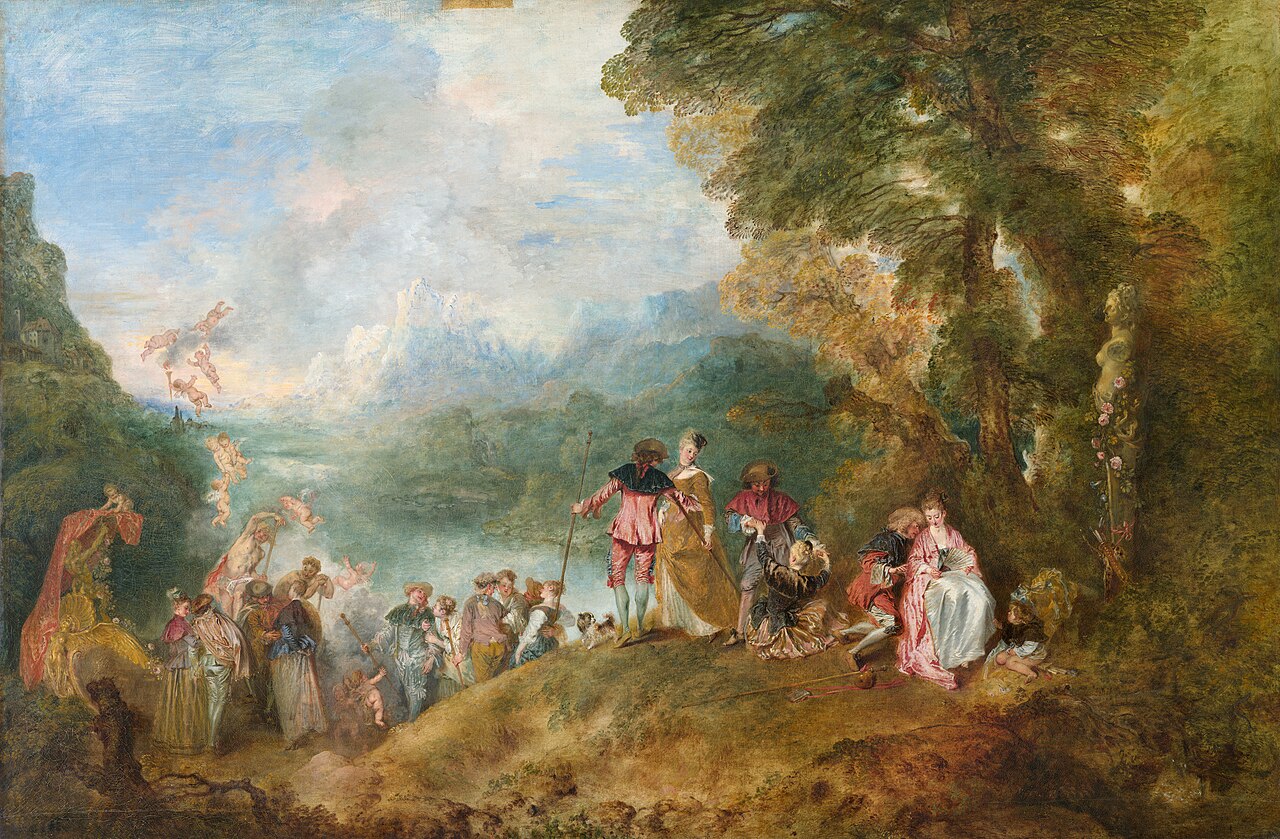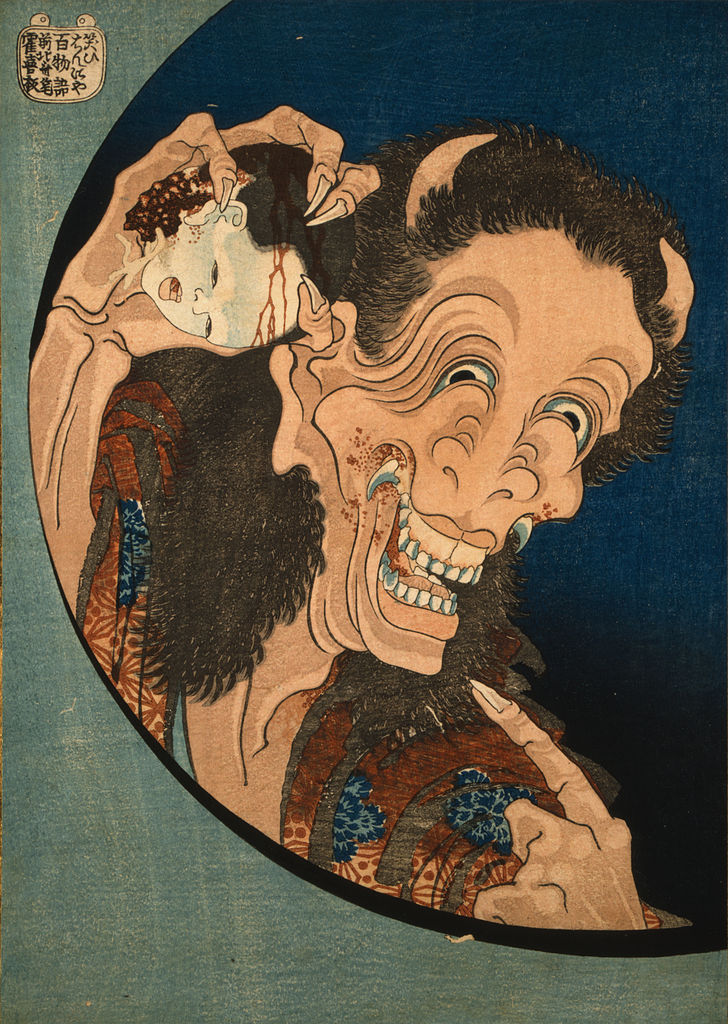
One Hundred Ghost Stories Plate II:
The Laughing Hannya (Warai-hannya)
The second of Hokusai’s prints shows two different monsters that appear in an unholy union: a hannya (般若), which is a vengeful female demon, and a yamanba (山姥 or 山うば) or Yama Uba or Yamamba, a fairy of the mountains. The Hannya, which is not only part of the stories of the Hyakumonogatari Kaidankai but also a traditional character in the Nō-theatre, embodies jealousy and anger. Long, long time ago she was said to be an ordinary woman with beautiful eyes. She was deeply hurt by a man she loved so she lost her spirit in the darkness and transformed into a vengeful demon who attacked mostly men to take her revenge.

The Yamanba, who also makes her appearance in the Nō-theatre and is an ancient legend, is said to be an old mountain witch, dressed in a ripped kimono with long, shaggy, white hair. She can change her appearance and turn into a beautiful young woman. The legends vary: she is described as vengeful spirit, cruel and violent. Or she can be just grumpy and creepy, or even kind and wise. It is safe to assume that it is not the wise and kind aspect that makes its appearance in the tales and in Hokusais print but the cruel and violent version who lures lost children and travellers into her hut to eat them.
Hokusai depicted the laughing creature Hannya with reference to a traditional mask of the Noh-theatre: The mask usually has bull-like horns, a leering mouth with prominent teeth, and metallic eyes.

Hokusais laughing Hannya has protruding, sharp fangs in her laughing mouth which is splattered with blood. Her head is covered in short, frizzy hair, symbolizing the mad and unruly character of the ghost. She stares at the viewer outside the picture, just waiting for him to come to her. Her skeletal claw-like right hands are holding a severed children’s head while her left hand points towards the head of the child. The partly cut circle could be a window, if we compare it with a plate by Hiroshige.
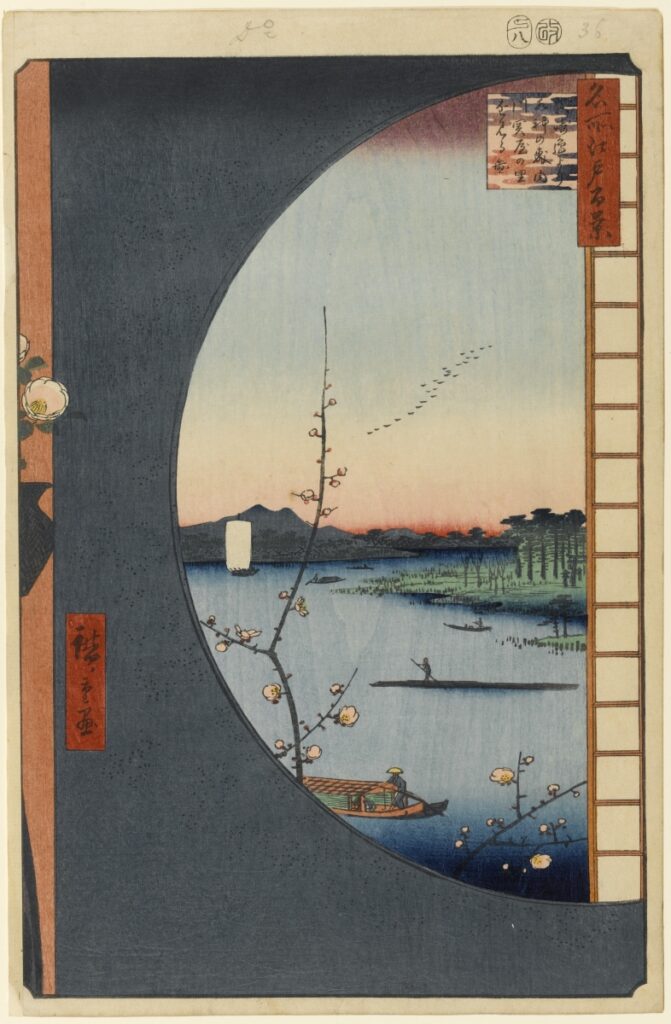
1857, Brooklyn Museum
It looks like we see her from inside of our home through the window. We fall into the role of the intended next victim while she gleefully shows us what fate we can expect.
To be honest, to me personally, the whole macabre scene is less grisly or scary than kind of… comical? It has a slight taste of a peculiar silliness and humorous. And indeed, modern interpretations recognize the “macabre fantasy and even a certain humour” in Hokusais work. I think we can apply the Guardians comment on Kohada Koheiji “Funny Bones” to the laughing Hannya as well: “the picture was likely „designed to induce shrieks of laughter as much as fright“.
Other Hannya-depictions






